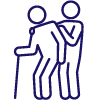- Yokohama-shi Top Page
- Sakae Ward Top Page
- Disaster Prevention and anti-crime program
- Disaster Prevention and Disasters
- Wind and flood damage
- Prepare for typhoons and heavy rains
Here's the text.
Prepare for typhoons and heavy rains
Last Updated December 27, 2023
Check 1. Daily preparation-Let's prepare for emergencies~
Let's check your home and shelter on the hazard map!
- Make sure that there is no risk of flooding near your home.(Flood Hazard Map)
- Make sure there are no cliffs near your home.Earth and sand disaster hazard map)
- Write the evacuation route from your home to the evacuation center on the map. (evacuation sites during storm and flood damage)
Be careful when considering evacuation routes
- Check multiple evacuation routes so that you can evacuate to two or more evacuation centers.
- Avoid roads that may be closed due to flooding due to heavy rain or landslides.
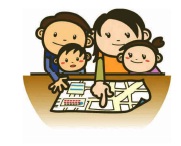
Let's check the items to be taken out during evacuation!
- Prepare items to be taken out during evacuation on a daily basis so that you can take them out immediately.
- Let's keep the items to the minimum necessary. (Radio, drinking water, flashlights, pharmaceuticals, baby supplies, etc.)

Let's work together to protect our town!
- In the event of an emergency, cherish your relationship with your neighbors on a daily basis so that you can help each other.
- Create a system that can cooperate in the community in order to protect the safety of people who are difficult to respond flexibly, such as evacuation behavior in the event of a disaster due to disability or elderly people.
- Let's talk about the cooperation system in the event of a disaster with nearby social welfare facilities in the community on a daily basis.
- disaster drill, evacuation drill, and lectures will be held to acquire knowledge about disaster prevention.
- When evacuation warning comes out, call out to the neighborhood and take the initiative in evacuating.
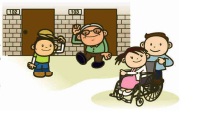
Check 2. If heavy rain falls ~ Let's be careful about this point ~
Let's try to collect information frequently on your own!
Please check the information frequently on the Japan Meteorological Agency website and the Yokohama City website.
- Japan Meteorological Agency website (weather information) (outside site)
- Yokohama City Disaster Prevention Information
Be especially careful if you receive earth and sand disaster warning information.
Click here for earth and sand disaster alert information (Japan Meteorological Agency homepage) (outside site)

Let's be careful about the condition of the cliff!
A phenomenon of a landslide
- Pebbles fall from the cliff.
- New spring water is generated on the slope.
- The spring water is muddy.
- There is a crack on the slope.
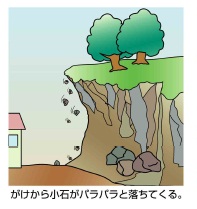
If there is any precursor such as the above, take evacuation action as soon as possible.
In addition, there may be no time from the occurrence of a precursory phenomenon to the occurrence of a landslide, or there may be no precursory phenomenon and a landslide may occur.
If you feel danger, take early evacuation actions.
Check 3. When evacuation information comes out-Evacuation behavior to save lives-
Let's try to evacuate safely without overdoing it!
When evacuating, wear comfortable clothes and try to act with two or more people.
Evacuation means "evacuation" of "difficulty", and going to evacuation sites is not the only evacuation behavior.
If the surroundings are dark and the inundation has already begun, do not forcibly go out and consider "evacuation at home" to stay in a high place where safety can be secured at home, such as the second floor of your home.
Click here for evacuation at home (Regional Disaster Prevention Section, General Affairs Bureau Crisis Management Department)
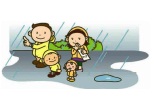
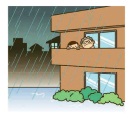
Let's evacuate on a safe route!
- At the time of evacuation, avoid roads along rivers and cliffs and underground roads.
- Heavy rain may cause gutters and manholes on the road to come off, so be careful not to approach them.
The name of evacuation information has been partially changed.
Following the damage of Typhoon No. 19 in 2019, the Cabinet Office examined measures against storm and flood damage, and the revised "Disaster Countermeasures Basic Law" was enforced on May 20, 2021, and the "Name of evacuation information" at the alert level was changed. I will let you know.
Details of the changes
Cabinet Office Disaster Prevention Information Homepage (outside site)
New | Old |
|---|---|
Evacuation of elderly people, etc. | "Evacuation preparations, evacuation of elderly people, etc." |
"evacuation warning," | evacuation warning (emergency) and evacuation warning |
"Emergency Safety" | Disaster Occurrence Information |
Evacuation Information
| Evacuation Information | Estimated announcement | Your actions |
|---|---|---|
| Evacuation of elderly people, etc. | [River flooding] | It is time for people other than the elderly to start with their usual actions as needed, prepare for evacuation, and evacuate voluntarily if they feel danger. |
| evacuation warning | [River flooding] ・When the water level reaches the “flood danger water level” and the water level is expected to continue to rise due to rainfall in the upstream area. ・When there is a risk of flooding due to a sudden rise in water level when the water level exceeds the "inundation caution water level" ・When abnormal water leakage is discovered ・When a typhoon approaches and passes at dawn from night when it exceeds the "flood warning water level", and a large amount of rainfall is expected, such as the announcement of a heavy rain warning, etc. [Landslide Disaster] ・When earth and sand disaster alert information is announced ・When a heavy rain warning (earth and sand disaster) has been announced and record short-term heavy rain information is announced. ・When a precursor to a landslide disaster is discovered | Evacuate everyone from dangerous places. If it is difficult to evacuate to evacuation sites, evacuate to the second floor or higher of the building (the room opposite the slope). |
| Emergency safety | [River flooding] | Take the "best action to save your life." |
Information gathering
In Yokohama City, when communicating evacuation warning, etc. to citizens, the following means are used.
- Disaster prevention information e-mail
We provide disaster prevention information to registered e-mails on PCs and mobile phones. You can register from the link below.
Registration of Yokohama City Disaster Prevention Information Email
- Provision of information via "Emergency Bulletin Mail"
Information will be delivered to mobile phones that support emergency bulletin emails in the target area. Please check the following to see if your mobile phone is compatible.
About emergency bulletin mail - Provision of information through data broadcasting of TV Kanagawa
- Information provision via "Homepage" and "Twitter"
We distribute evacuation warning and others through the Yokohama City Crisis Management Office website and Twitter.
About the transmission of disaster-related information by Twitter
- Provision of information via television, radio, etc.
- Information provision by public relations vehicles, etc.
We carry out call by public information car or fire engine.
voluntary evacuation
As for sediment-related disasters,voluntary evacuation should be immediately started without waiting for evacuation warning if a different precursor is found.
Inquiries to this page
Sakae Ward General Affairs Department General Affairs Division
Telephone: 045-894-8312
Telephone: 045-894-8312
Fax: 045-895-2260
Email address: sa-bosai@city.yokohama.jp
Page ID: 542-644-727








